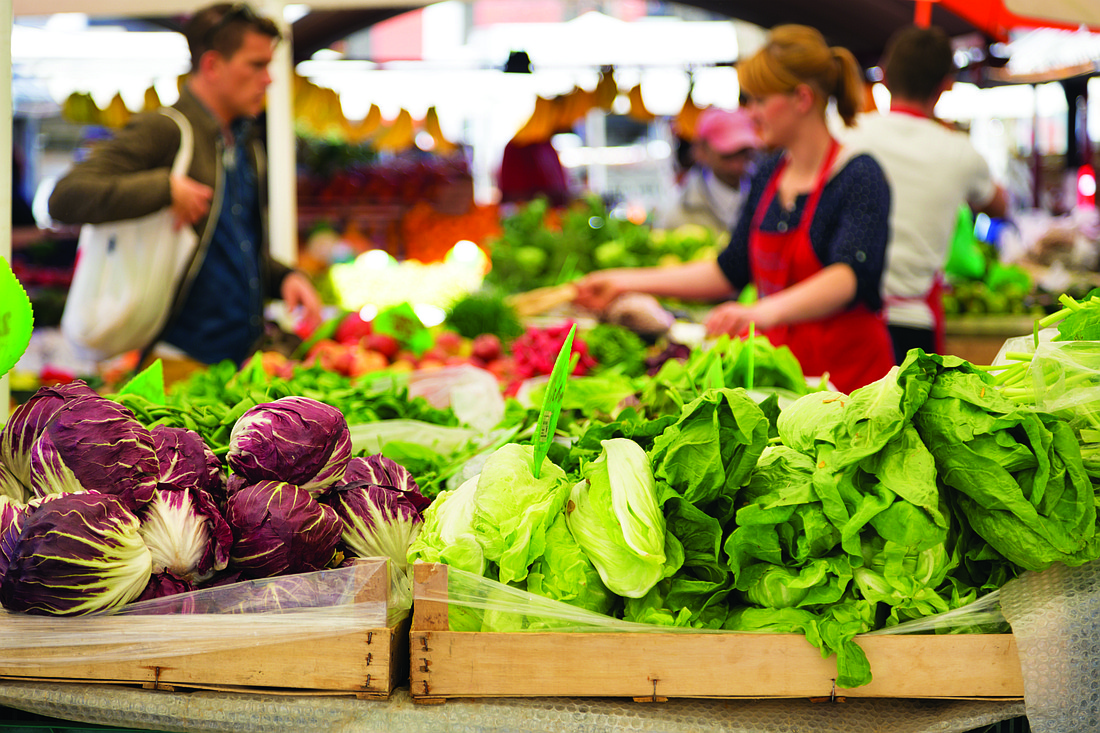- July 14, 2025
-
-
Loading

Loading

Commercial grocery stores are overflowing with year-round produce, which can create some confusion surrounding what fruits and vegetables are actually in season.
Eating seasonally can be looked at in two ways, according to a 2013 study by Public Health Nutrition Research Group. Globally seasonal eating is when food purchased is in season elsewhere and shipped worldwide. Locally seasonal eating is when food is grown and purchased in the consumer’s region.
Although globally seasonal eating can create diverse daily meals, it contributes to a higher environmental cost, the study stated. Whereas locally seasonal eating can aid in a more sustainable diet.
Seasonality also affects how nutrients are absorbed by the body. Local produce is picked when it’s ripe, which leaves fruits and vegetables to reach maximum nutrients levels that would otherwise decrease significantly when shipped from farther locations.
After produce is harvested, vitamin C decreases rapidly and continues during storage, according to a 2007 University of California study. Vegetables stored at 39 degrees for a week can lose up to 77% of their vitamin C, depending on the type of vegetable.
A 2005 Penn State University study found that spinach, for example, left in a refrigerator, such as a refrigerated truck or produce box, for eight days at 39 degrees has the ability to lose 37% of its folate, a B vitamin needed to make DNA and other genetic material.
Honeyside Farms, known for its strawberries, is in its ninth season and recently moved from the Sarasota area to Parrish. Honeyside President Tiffany Bailey said that compared to a commercial grocery store, the farm’s strawberries are always picked at peak ripeness.
“You’re not ever going to see any white [on our strawberries],” Bailey said. “Not only is that the best-tasting [strawberry] but also the most nutrient-dense. That’s when it’s intended to eat, not when [a strawberry is] half white.”
Honeyside Farms delivers fresh produce twice a week to the restaurants it partners with. Rather than calling its customers after crops are ready, Bailey said she sits down with chefs to inform them of what they plan to grow in the upcoming season.
Unlike northern states, where the growing season is from late April to early October, Honeyside begins its field prep work in July and harvests through the first week of June.
Steve Phelps, the owner and chef of Indigenous Sarasota, is no stranger to watching what foods are in season.
A Florida transplant from Cleveland, Phelps said living “in a place where seasons truly change” taught him that when the temperature changes, it’s time for a new menu.
Relying on a seasonal menu was a no-brainer for Phelps, who opened Indigenous Sarasota in 2011. Each season he sits down with local farmers to see what the crops look like, and from there he crafts his upcoming menu.
“Everything that we put on these plates, we do it for it your body and for your knowledge,” he said. “Not only would we like you to know the name of the captain who caught your fish, but you can actually go meet the farmer who made your salad on Saturday if you go to the [Sarasota Farmers Market].”